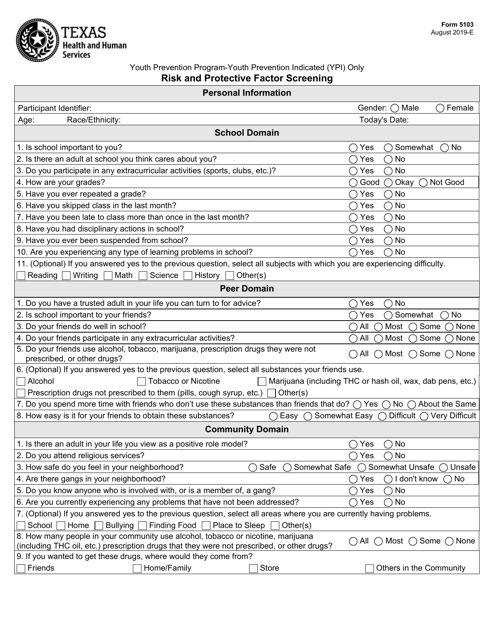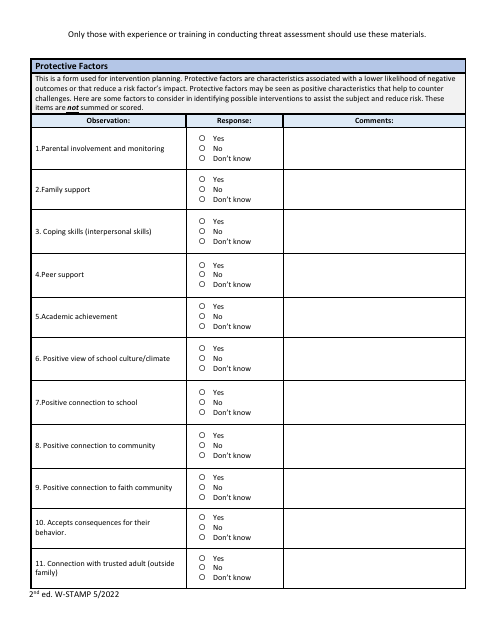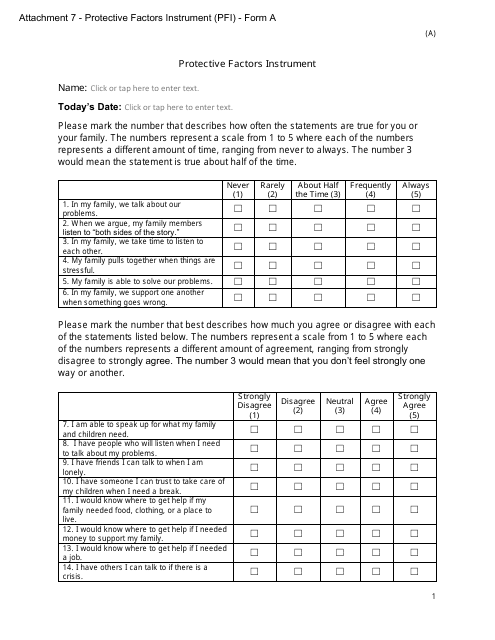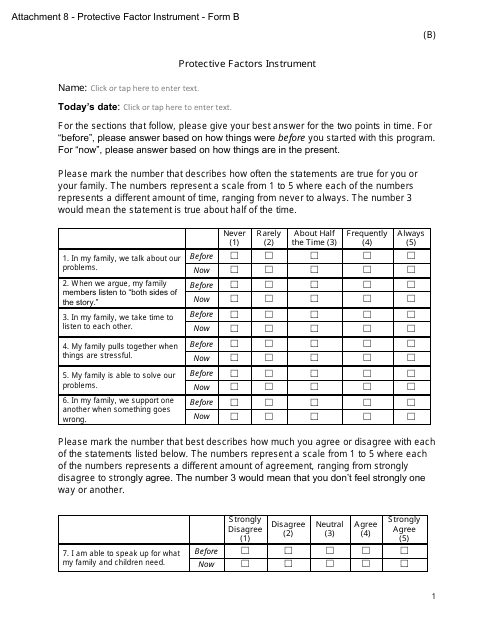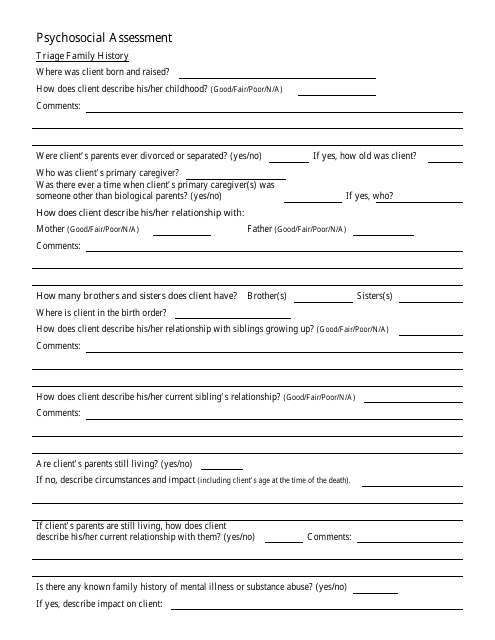Protective Factors Templates
Protective Factors: Enhancing Well-being and Resilience
In an ever-changing and often unpredictable world, it is important to recognize and cultivate protective factors that can enhance our overall well-being and resilience. Protective factors are the internal and external elements that promote positive outcomes and mitigate the impact of risk factors, thus improving our ability to adapt and thrive.
At the societal level, various organizations and institutions have developed resources to assess and identify protective factors in individuals, families, and communities. These resources are often referred to as Protective Factors Instruments and are designed to gather valuable information that can inform targeted interventions and support services.
In the state of Texas, Form 5103 Risk and Protective Factor Screening is utilized to assess and identify both risk and protective factors within communities. By understanding the specific protective factors within a community, policymakers and service providers can allocate resources effectively and tailor interventions to address the unique needs and strengths of individuals.
Similarly, the state of Wisconsin has developed the Wisconsin School Threat Assessment Form - Phase II, which includes a section dedicated to Protective Factors. By identifying protective factors within the school environment, educators can create a nurturing and supportive atmosphere that promotes well-being and resilience, thereby reducing the likelihood of potential threats.
New York has also recognized the importance of protective factors in promoting healthy development and well-being. Form A Attachment 7 and Form B Attachment 8, collectively known as Protective Factors Instruments, are used to evaluate and measure the presence of protective factors in individuals and families. This valuable information allows service providers to design effective interventions that harness and strengthen these protective factors, thus improving outcomes for those in need.
Moreover, a Psychosocial Assessment Template is an example of a document that can be used to comprehensively evaluate an individual's protective factors, along with various other psychosocial factors. This holistic approach recognizes that protective factors do not exist in isolation but are influenced by multiple factors including personal characteristics, family dynamics, and socio-environmental factors.
Investing in protective factors is essential for promoting well-being, building resilience, and safeguarding individuals, families, and communities. By utilizing protective factor instruments and assessments, policymakers, educators, and service providers can gain a deeper understanding of the strengths and resources available within their respective domains. Together, we can create a supportive and conducive environment that nurtures the growth and development of individuals, empowering them to overcome challenges and thrive.
Documents:
6
This form is used for screening risk and protective factors in Texas. It helps identify potential risks and protective factors that could impact individuals or communities.
This document is a form used in New York to assess protective factors.
This form is used for assessing the protective factors in New York. It is an attachment to Form B and helps gather information about the factors that contribute to individuals and families' resilience and well-being.

